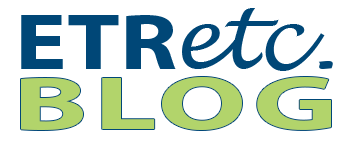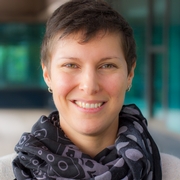Power Makes a Difference: Youth-Adult Partnerships Work!
By Annika Shore, MPH | December 16, 2014
My work as a professional development consultant at ETR focuses on developing the knowledge and skills of people in the field of adolescent sexual and reproductive health. Our goal? To collectively enhance the health and well-being of young people.
When I think back on the most powerful moments of my career, they all share one thing in common: they were moments when young people and adults worked closely together for a shared goal. Some of those moments occurred when I was the young person, working with mentors in a health education program. Some were more recent, when, as an adult professional, I joined with youth to co-plan conferences or workshops.
Mentorship Builds Confidence and Skills
I first discovered my interest for work in sexual health education and HIV prevention when I was in high school. I joined my local Planned Parenthood’s Teen Council when I was 17. I remember working closely with Tim, Carol and Jodi, the three adult facilitators of the Teen Council. We created lesson plans and wrote scripts for teen theatre productions.
The confidence and skills I gained by working with my mentors in Teen Council led me to pursue work in this field as an adult. I am still in touch with all of my mentors, and I am proud to say that today we call each other colleagues.
Finding Inspiration as a Mentor
Some years later, I coordinated a youth-focused HIV prevention and sexual health education program for an AIDS services organization in Portland, Oregon. I supported a group of young educators in their efforts to prevent HIV infection among their peers. The innovation and energy they brought to their projects was, and is, so inspiring!
Moments such as these are the reason I am passionate today about working toward a healthier and more equitable world for young people—a passion I bring daily to my work at ETR–and they are also why I believe strongly in the power of Youth-Adult Partnerships (Y-APs).
Y-APs = Positive Outcomes for All
There are many innovative models for ways we as a field can engage young people in programs and activities that help them thrive. Peer education programs, positive youth development programs and culturally specific youth empowerment programs are all fine examples of ways communities are mobilizing around their youth.
But the construct of Y-APs is especially relevant and exciting because it focuses on positive outcomes not just for youth, but for adults, organizations, and communities as well.
The growing evidence base about how Youth-Adult Partnerships work defines them as:
…the practice of: (a) multiple youth and multiple adults deliberating and acting together, (b) in a collective [democratic] fashion (c) over a sustained period of time, (d) through shared work, (e) intended to promote social justice, strengthen an organization and/or affirmatively address a community issue.
The concepts of shared work, collaborative action and decision making, and mutual vision place Y-APs on the cutting edge of models for youth engagement in this field. This definition inherently rejects some of the traditional ways our programs have functioned. In more conventional programs, adults design a program or activity they believe will benefit youth, and the youth receive the program and subsequent benefit. In Youth-Adult Partnerships, youth and adults decide together on the issues and the course of action. And, in turn, both benefit.
Four Key Elements of Success
Shepherd Zeldin, a leading researcher on Y-APs, identifies four key elements of successful Y-APs:
- Authentic decision making. In order for young people to thrive, they need to build self-efficacy and personal agency. One of the pillars of Youth-Adult Partnerships is the idea that when young people have genuine opportunities to exercise their voice and influence meaningful decisions, it leads to increased self-efficacy and confidence.
- Natural mentors. Think back on the influential adults in your life when you were an adolescent. Were any of them assigned to you? Or did you naturally gravitate toward a particular teacher, aunt or youth group leader?
Dr. Zeldin points out, “Youth have choices. They can form different kinds of relationships with different adults.” When true natural mentors are found, they can help youth overcome adversity, serve as meaningful and relevant role models in which to find hope and inspiration, and help young people create networks that can provide opportunities for their future.
- Reciprocity. This is perhaps the most distinctive core ingredient in Y-APs. When youth and adults both engage in learning and contribute equitably to each other’s growth, it can lead to something Zeldin describes as “radical collegiality”—a term I love! It means that the mutuality of the collegial relationship between young people and adults can be so powerful that it has the ability to transform everything—not only the young people, but the adults, the organizations and the communities touched by the partnership.
Research shows that adults who engage in reciprocal partnerships with youth have improved inspiration and motivation for their own work, a more positive view of young people in general, a greater capacity for innovation in their projects, and greater confidence that their projects will actually succeed.
- Community connectedness. The final ingredient in successful Y-APs is something we see a lot in positive youth development programs. We know that when youth feel meaningfully connected to adults and public institutions, they do better. They are more likely to engage in civic activities, have better health outcomes and do better in school.
Too many of our public institutions separate young people from the rest of their community. When we break down the barriers and create intergenerational community connections, both young people and institutions thrive.
Small Steps Can Make a Real Difference
Fostering true Y-APs in our work can be a challenge. There are a number of institutionalized challenges to forming these connections. For example, most youth are in school while most adults are at work; there is frequently an underlying mistrust between youth and adults; and many organizations do not currently have the resources to invest in this type of new partnership.
However, even small steps toward working in partnership with youth are valuable. Here are some tips on how to incorporate Youth-Adult Partnerships into your work:
- Talk to young people in the population you’re serving. Tell them about your work. Ask them what matters to them, and be open to hearing the answers.
- Learn more about Y-APs yourself, then advocate for partnering with youth on relevant projects. Draft a rationale for the leadership at your organization. Join with a young person in your community to make the case for the partnership.
- Adapt your study design. Do you do research or evaluation concerning adolescent health outcomes? In your next proposal, use Community-Based Participatory Research to inform your study design. This is an ethical and pragmatic way to include adolescents’ voices and skill-building at the research level.
- Discover what young people are already doing in your community. Offer to support their work by volunteering or providing resources. Building trust with the youth in your population is an important first step to fostering true partnerships later.
Where to Learn More
For more information about Youth-Adult Partnerships, here are some stellar resources:
- Young people! If you’re interested in learning more about Youth-Adult Partnerships, start with the youth in your life. Talk about Y-APs. Share the information you have, see what you can learn from them, and explore resources together.
- Articles by Dr. Zeldin and colleagues, including this one from the American Journal of Community Psychology and this one from the Bronfenbrenner Center for Translational Research.
- Resource guides and manuals. Many are available online. Check out Building Effective Youth and Adult Partnerships or some of the other resources from Advocates for Youth. I also like The Youth Voice Toolbox: Youth-Adult Partnerships by Adam Fletcher and the Free Child Project. The Center for Strengthening Youth Prevention Paradigms at Children’s Hospital of Los Angeles also has some great resources and examples in their news feed.
- Your colleagues, including me! For fruitful discussions about Y-APs, feel free to contact me at Annika.shore@etr.org.
Annika Shore, MPH, serves as a professional development consultant with ETR. In that role, she provides support on all aspects of ETR’s professional learning services. You can reach her at Annika.shore@etr.org or find her at LinkedIn.





